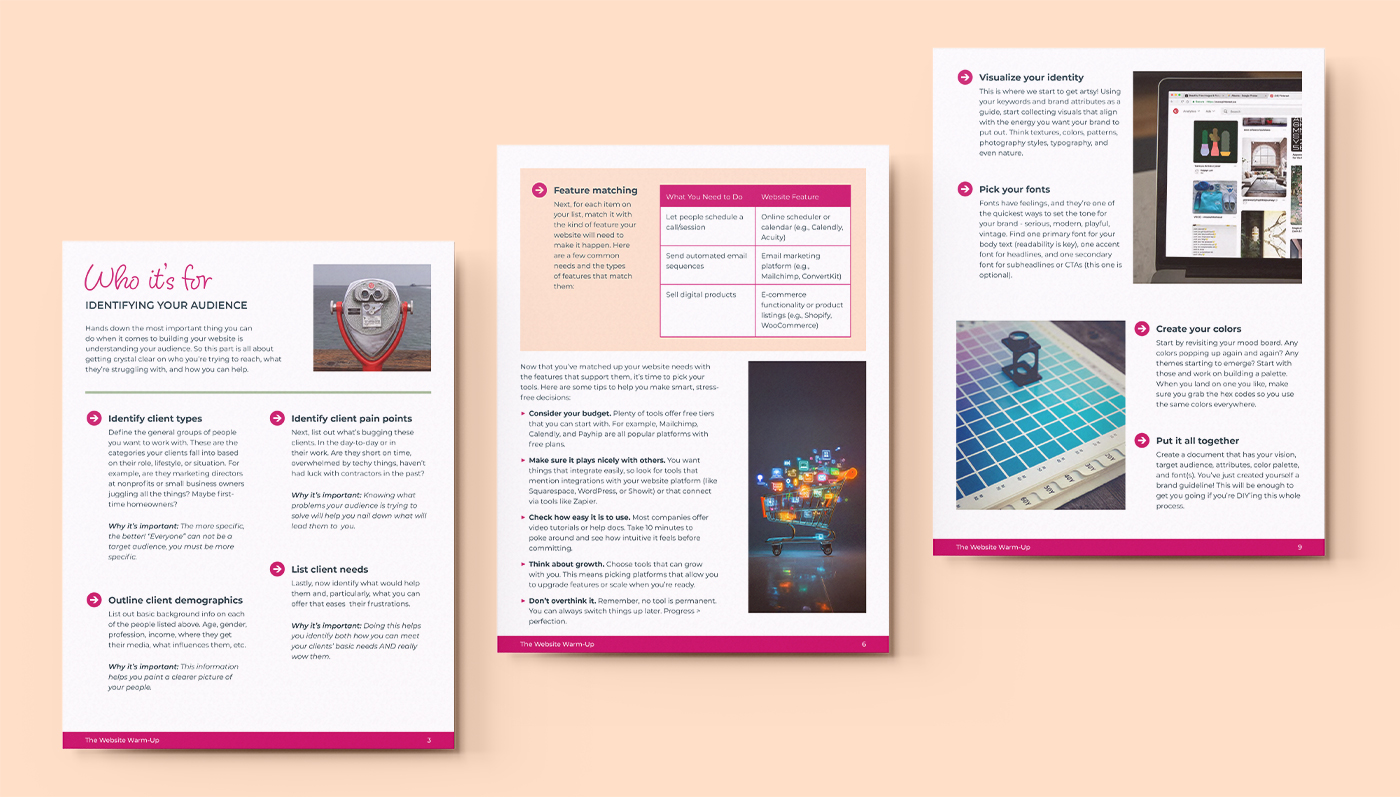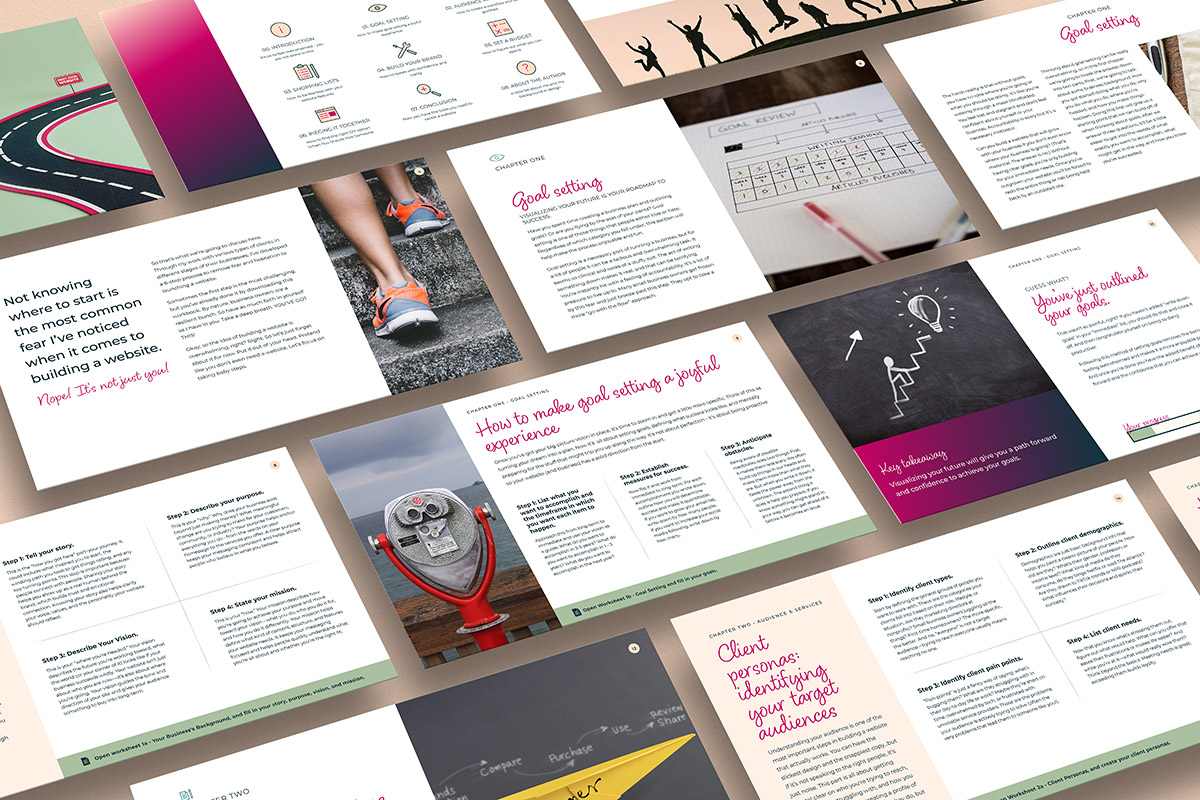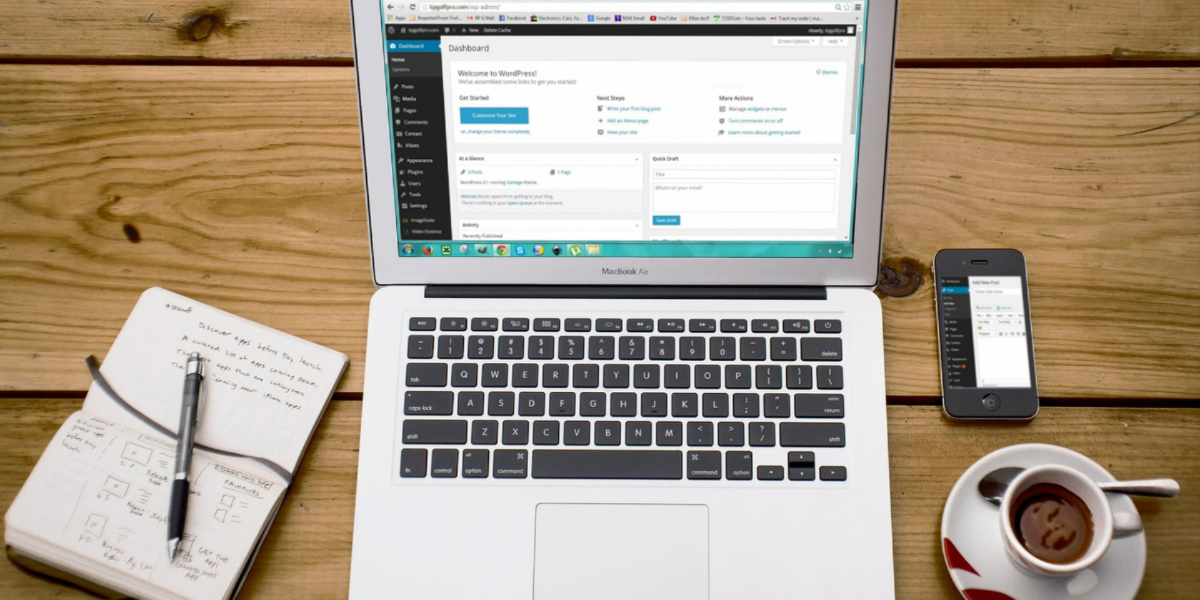If you're ready to start building your website but don't know where to start, here are a few steps to take before diving in.
If you’re a small business owner planning out your web presence, you might find yourself wondering where to start when building a website. Starting a business is tough. Tax forms, business plans, marketing objectives, sales funnels – it’s enough to make anyone want to pop open a bottle of wine and sit in the middle of the floor rocking back and forth. (At least that’s what it makes me want to do.) And just when you think you’ve finished, you have the frightening task of building a website.
One thing you’ll come to learn is that, while it looks simple enough on the outside, nothing is ever as easy as it may seem. Often times the most user-friendly and simple looking websites are the most complex built. There are a lot of moving pieces and parts that go on behind the scenes that make a good website function well. And there’s A LOT that you should know before you dive in head first.
So where do you start?
1. Find a domain name. For the love of god do this before ANYTHING else.
You should do this even before you even file your DBA/LLC/etc. paperwork. Once you have a business name in mind, make sure the domain name is available. I cannot stress this enough. BUY THE DOMAIN BEFORE SUBMITTING PAPERWORK.
Why? It’s much easier to buy a domain name than it is to file all that paperwork – twice. I had a client who started a business – filed all the appropriate paperwork, had contracts signed, and even started their marketing materials – before they purchased the domain name. When they decided it was time, it turned out the name was labeled “premium” and it was close to $3,000 to purchase it. They had already gone so far with the name, they couldn’t turn back. They were out thousands of dollars because of poor planning.
You also run the risk of the domain name not being available. Then you have to use a .me or .us suffix and that’s just janky. Nobody wants that.
So do yourself a favor and search domain names while you’re searching business names. It’ll save yourself a lot of headaches down the road.
2. Take the time to identify what kind of website you’re building, who it’s for, and what you want it to do.
You’ve just had this great business idea and you want to hit the ground running. It’s all really exciting! But taking a beat and giving some thought to the features you want is a necessary step people often overlook. And overlooking this can and will cost you LOTS of time and money in the long run.
A basic website that just has your bio and how to contact you is a hugely different beast than something with a shopping cart, or something that provides membership. Having this ironed out first will help you pick the right designer and/or developer.
Here’s an analogy that might clear things up. Let’s say you want a car. There are hundreds of cars out there, so knowing what you need it for will help you pick the right one. If you plan on competing in drag races at night, you wouldn’t go to a Hummer dealership, right? Or if you plan on driving on rough terrain, you wouldn’t shop at Ferrari.
In this analogy, your website would be the car and your designer and/or developer would be the people who make the car. Not all designers have the same knowledge just like not all car makers know how to create every kind of car.
Why is this important? If you don’t know what kind of website you need, you risk hiring someone who can’t deliver. You could end up paying a deposit and then realizing they’re in over their heads. Then you’re stuck finding someone else to finish the project, you could potentially lose thousands of dollars, and maybe even have to start from scratch. No thanks!
3. Determine your budget
I’m going to be honest here. In the world of web, you get what you pay for. If you want a website with a lot of functionality, be prepared to spend a lot of money. Don’t expect to build a mansion for the price of a shack. If your budget is small, start small. Work within your budget now and expand it as more funds are available to you. The nice thing about websites is that it’s scalable!
Word of warning: if you find a designer/developer who offers to build you everything you want for a low price, be wary. You may not actually be getting what you want. I’ve worked with a handful of clients who fell for people telling them they can solve all of their problems, only to create more in the long run. See below for more information on finding the right designer/developer.
4. Find a designer and/or developer to build your website
Since you’ve already determined what you need, this should be a breeze. Look at websites you like that have similar functionality to what you want to build, and see who built those. Usually there’s something at the bottom of the web page that will say who built it. You can reach out to the designer or design firm and ask for a consultation. Even if you think they’ll be too expensive, it’ll be worth a phone call. They might offer some information you hadn’t thought of. Or they might be able to point you in the direction of someone who can take on your project.
I mentioned looking at other websites – this is a HIGHLY important step and shouldn’t be breezed over. There are two reasons it’s necessary. 1) You need to have an idea of what’s possible and start thinking about what you want this website to do. Giving some thought to this and having a clear idea is going to save you a massive amount of time and money down the line. 2) Your designer needs to see examples of what you want to do. You want to make sure you’re both on the same page.
When you’ve found a few designers and/or design firms you’re interested in, you’ll need to set up a meeting or a phone call with them. They’re likely to have many questions for you, but you should also be prepared with questions for them. Below is a list of information and questions you should have prepared for your meeting:
- The purpose of your website, what you want it to accomplish, and a list of links to websites that have similar functionality.
- Your budget and ideal time frame
- What kind of clients does the designer specialize in?
- Ask to see the designer’s recent projects and have them explain why they made the choices they made.
5. Schedule a general timeline for the project
Like I said above, there are a lot of moving pieces that go into developing a website. Even if it’s just you and a freelancer, it’s still important to outline a plan of attack. Otherwise it’s really easy to get off track or get caught up adding in additional features.
The first step would be to set up a start date and a finish date. Then you want to identify your milestones. For example, information gathering, mockups, final design, development, those would all be considered milestones. Many companies choose to use something called a Gantt Chart. These charts are easy ways of keeping projects on schedule without the constraints of calendars.
One thing to keep in mind when creating this timeline is padding. Your designer will most likely add this in, but you should be aware of it too. I can’t prove this, but there hasn’t been one project in the history of all projects on the planet that has ever gone exactly as planned. Even if you plan for the unexpected, something even more unexpected will pop up. Just be aware that this timeline will fluctuate slightly.
6. Start outlining your content
This should be a major priority. Whether you’re writing it yourself or hiring a copywriter, knowing what content you want, or at least an outline of the pages and what kind of content will be included in them, will minimize any surprise costs down the road. If you don’t have this figured out before your contractor starts building your site, don’t be surprised if they hit you with “this wasn’t in the scope, it’s going to cost you…” if you start tacking on pages or additional copy.
Remember that this is your website, it represents you and your business. If you’re nonchalant about the copy and content, your potential clients may assume you will be nonchalant with them, also. And nobody wants that!
Ready, set, go!
You’ve done all of the important things, now it’s time to get this puppy built. Best of luck in this process, and know that I’m here if you need anything.
And if you’re interested in a little more help in this process, check out the Fearless Website Workbook. It’s a 6-step process (with worksheets) that will help you get your ducks in a row before building a website, so you can replace fear with confidence.







